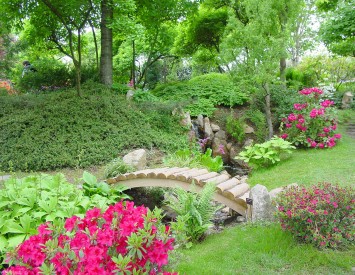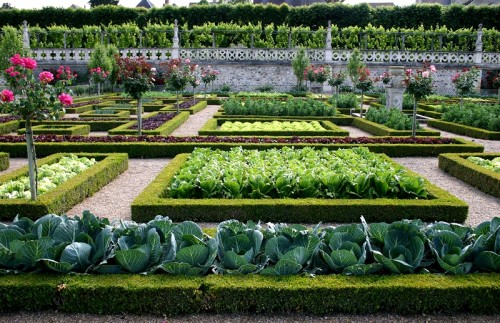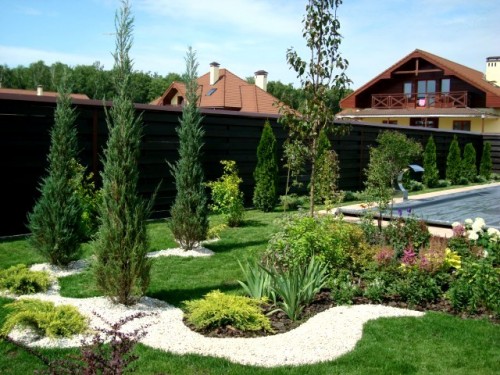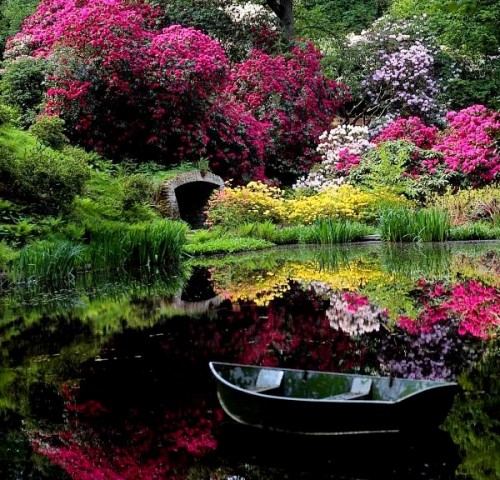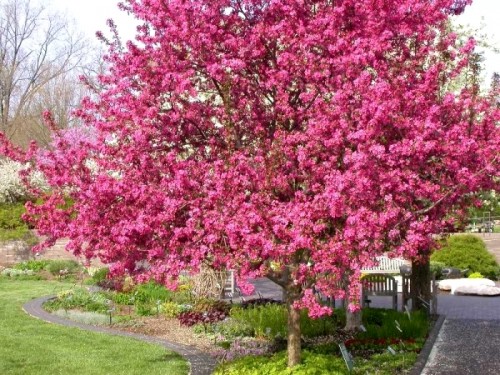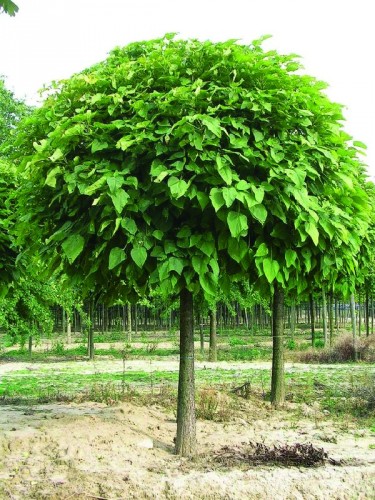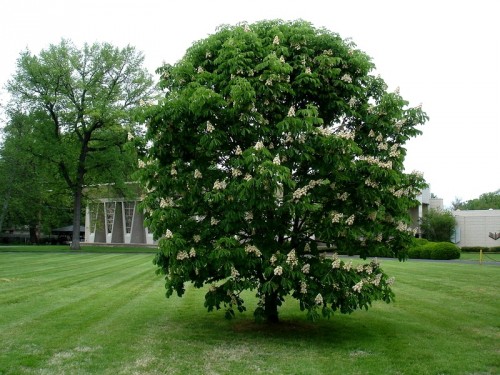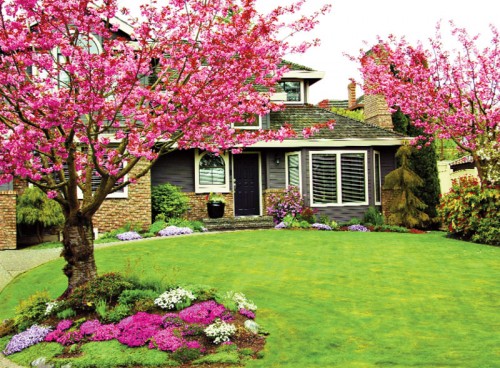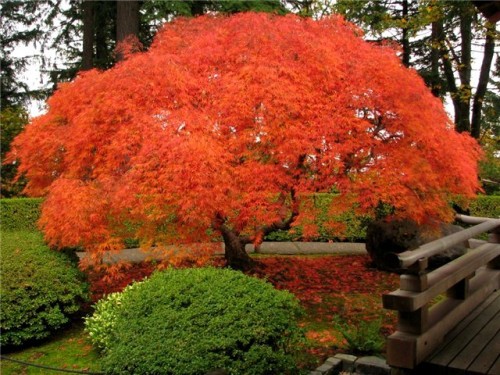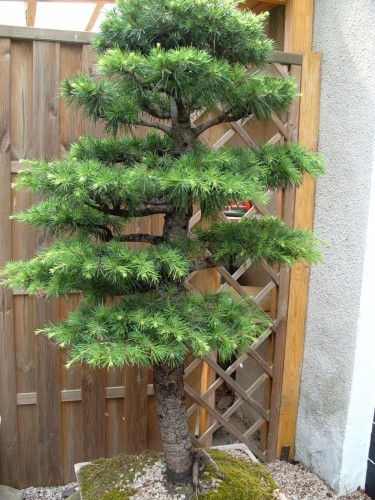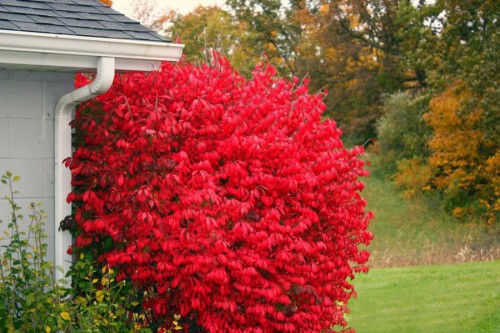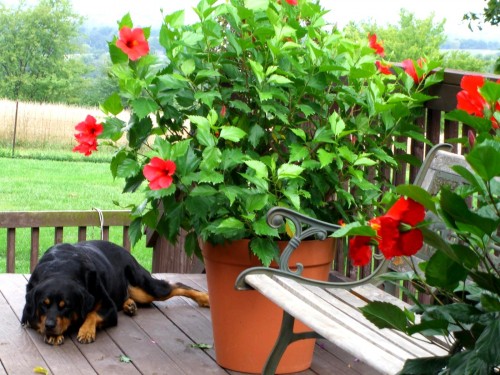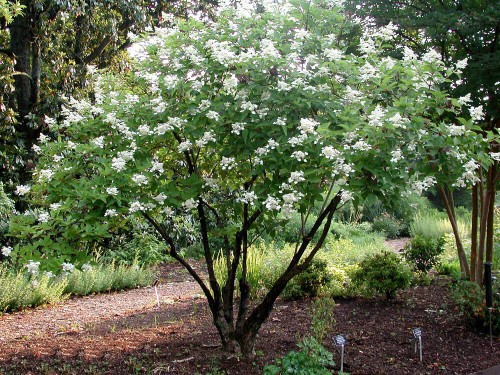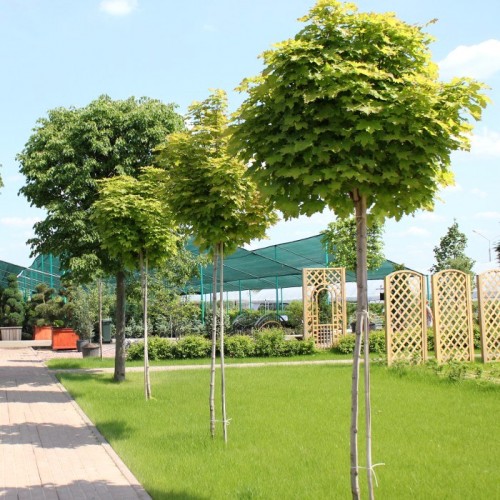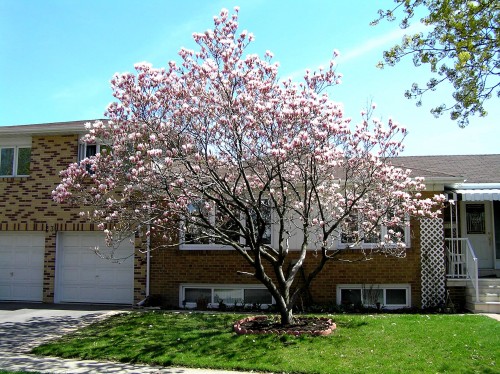Fruit trees and flowers in the modern garden are no longer so widely popular, since the landscape design of the territory has gained high significance. For the original design of the house site, decorative vegetation is increasingly used, a variety of varieties of which affects the imagination. Among the existing types of trees and shrubs, you can choose exactly those that optimally fit into the concept of the garden, regardless of the size and type of terrain.
Content
Choosing trees according to the style of the garden
Determining the vegetation variety that can decorate the garden plot is much easier if you know in which style it is planned to plant green spaces. Today there are two main concepts for the design of the territory:
- regular garden;
- landscape garden.
Plants for regular garden
This option of designing a house site involves planting vegetation according to a clear geometric lines, where thoroughly care for plantings is required: shrubs and trees for the garden are thoroughly trimmed to get the right shape. Such a garden is characterized by a hedge of any type, therefore, varieties of plants that carry a haircut are often used.
To form a low green fence is suitable:
- golden currants;
- small -leaved linden;
- sanshit evergreen;
- bunch of shrub;
- tiss is berry;
- ordinary spruce.
If the goal is to create a high molded hedge, then you should pay attention to plants such as:
- small -leaved knitting;
- tern;
- virgin juniper;
- barberry;
- thuja western.
Vegetation for landscape garden
This type of personal plot is an untouched corner of nature, where trees and shrubs for the garden grow in its original form, without strict order and forms. The choice of green vegetation is quite wide, since the only criterion is the susceptibility of the tree to the conditions of a particular territory. Otherwise, the case remains with the fantasy of the landscape designer.
For the landscape garden, both deciduous and coniferous plants are suitable. Among the favorites, you can highlight such species as:
- spirea;
- snowberry;
- lilac;
- maple;
- kiznik;
- birch;
- monaure;
- bubble.
Many of them bloom beautifully, and some varieties even bring edible fruits in the fall.
Exotic trees and shrubs in the garden
Modern gardeners strive to transfer the riot of greenery and multicolor of original plants to their territory, since traditional trees and shrubs are somewhat losing in aesthetics. In addition, many varieties of plantings quickly take root in domestic expanses, delighting eyes with originality and beauty. Consider the most popular types of trees used in landscape design.
The apple tree of Nedzvets
Fruit trees in Saduvn were valued above the rest. But this variety is famous not only for fruitful qualities, but also by decorative. The apple tree of Nedzvetsky is a low plant, growing up to 8 m with a length with purple leaves. The moment of flowering of the tree is the most valuable, since the whole crown is covered with bright pink and lilac colors. This variety of apple trees has gained popularity thanks to such qualities as:
- frost resistance;
- resistance to diseases and pests;
- unpretentiousness;
- high aesthetic value;
- universality of landing in group, alley and single compositions;
- fertility.
Sakura
Decorative trees for the garden is difficult to imagine without sakura, the flowering of which is known all over the world. This variety of wood includes cherries short -shaped and finely sawn. Its unusual purple color gives the plant high decorative qualities. However, it is quite susceptible and needs to be careful:
- it is recommended to tie the vaccine and crowns in the reed layer to ensure frost resistance conditions;
- prevention from bone diseases is required;
- it is advisable to plant in moderately warm climatic conditions.
Catalpa is bignony -shaped
Catalpa brought from America today has become a popular plant that decorates domestic gardens. At the end of spring, the tree is covered with a cloud of snow -white flowering, which even in their form look quite exotic. The plant gained wide popularity thanks to the following features:
- white flowers exude a rich aroma;
- the tree is photophilous, due to which it can grow in any part of the garden;
- unpretentious in care;
- it tolerates dry weather well, does not require frequent watering.
Horse chestnut
When deciding which trees to buy for the garden, the attention of the Baumanii chestnut attracts attention, which is distinguished by lush terry inflorescences of a white or red shade. This type of tree is common among gardeners due to such characteristics as:
- growth intensity;
- unpretentiousness in care;
- resistance to disease and insects;
- decorative of inflorescences.
Principles of the location of trees in the garden
To design a neat garden territory, it is necessary to be guided by the principles of the correct location of the vegetation, since the form of the composition, the speed of planting and their compatibility depends on this. Consider the main requirements for the placement of trees on the site:
- For a small area, you need to select stunted or dwarf trees - cherries, dwarf apple tree, etc.
- High vegetation with a lush crown looks good in lowlands or on the lawns.
- It is necessary to plant trees as far as possible from the power line.
- When planting trees, try to prevent massive branches subsequently growth are above the roof of the building. Since this is how the risk of damage to the roof in case of breaking down.
- When choosing a variety and type of wood, consider its growth conditions. Do not plant plants with a powerful root system near the house. It is also recommended to design the garden depending on the photosensitivity of each tree.
Traditional trees in the garden
The beauty of exotic trees is not doubted. However, in many climatic zones, these plants will not be able to take root, no matter how careful care is done. In addition, among the traditional types of plantations, there are no less decorative representatives who are examined in detail below.
Maple is chubby
Many trees in the garden in the photo of design publications are precisely a variety of maple. This plant has a high decorative value, since the unusual color and shape of the leaves creates an original type of tree. In addition, such a variety of vegetation is famous for the beauty of inflorescences, textures of the cortex of the base and coloring of shoots. Such maple has gained popularity thanks to the following features:
- the presence of honey characteristics;
- the intensity of the growth of seedlings;
- the possibility of using both group and single compositions;
- a combination with coniferous species of trees.
Gimalayan cedar
This plant is a durable and fast -growing tree with decorative shapes of the crown, barrel and needle endings. This is a fairly common variety of coniferous planting, which is used for solitary planting and protects the site well from the penetration of extraneous eyes, noise and dust. For cedar, the following characteristics are characterized by:
- the attractiveness of the contours of the crown;
- good endurance of a haircut;
- used to create a hedge;
- frost resistance of the rock;
- unpretentity in leaving.
Birch bark winged
This dense shrub has a thick rounded crown, which spreads up to 1 meter high. It grows intensively, and also stains its foliage into a rich red tint with the onset of autumn. In addition, the birch bark blooms beautifully in May and decorates the garden with umbrella inflorescences of yellow-green color. The plant has such features as:
- winter hardiness;
- the possibility of creating a form;
- resistance to high temperatures;
- universality of landing: grows well with any soil.
Hibiscus
An unusual plant that has a small tree or shrub. Reaches a height of no more than 3 meters. Hibiscus has become particularly popular in gardening thanks to funnel -shaped flowering with an elegant trunk, as well as petals of various shades. In addition, this tree has such characteristics as:
- abundant flowering;
- unpretentiousness to habitat;
- the duration of the flowering period;
- aesthetic attractiveness.
Hydrangea
Hydrangea is an unusual decorative shrub, characterized by thick hats of bright flowering. Due to this feature, it has become quite popular among landscape designers and gardeners. Its crown has variable shades and wide large leaves, and the plant reaches up to 3 meters high. The beauty of the bush manifests itself in the summer months, when hydrangea blooms fully.
The maple is spicy
“Globosum” or oxide maple is a decorative tree with a rounded crown. Its dimensions reach 6 meters in diameter and are characterized by a rich yellow-orange tint. This tree has gained its popularity thanks to such features as:
- the aesthetic attractiveness of glossy, palmated leaves collected in a dense crown;
- compatibility with other types of vegetation on the site;
- the possibility of forming a single landscape composition, as well as landing in alleys;
- frost resistance;
- low need for watering.
Magnolia
This tree -like shrub is distinguished by the beauty of flowering that appear on the branches before the foliage blossoms. Dense petals of inflorescences have variability of color color - from purple to yellow, due to which the plant can be planted in any composition. In addition to other advantages, magnolia has a rich aroma and is unpretentious to growing conditions.
Garden layout
Many owners of the adjacent territory seek to create a cozy garden corner where you can spend leisure time. In order for the site to be as comfortable, neat and meet the requirements of landscape style, you should adhere to several rules in its design:
- The priority task is the design of the garden. Apply a schematic image on paper, where designate the desired zones for fruit trees, deciduous and coniferous vegetation. In this case, take into account the features of the growth of each variety, since for some types of plants you will need the sunny side, and for others - shady.
- Calculate the garden area. To do this, you need to find out the criteria of each planned variety of planting, namely its dimensions in a mature state. If the trees will be crowded, they will begin to deple the soil, since each root system will need enough nutrition.
- It is advisable to plant single trees at a distance of 4-5 meters in a row, and if several landing lines are planned, then there is no less than 8 meters between them.
- For group stands, follow a step of 6-7 meters.
Trees can be planted on the video clip:
